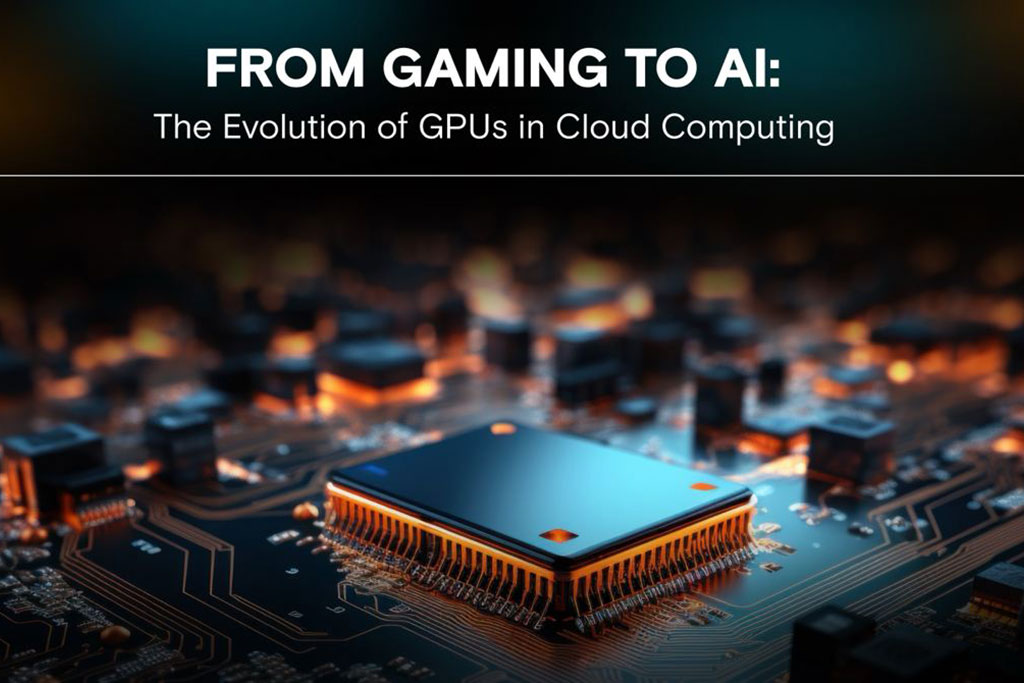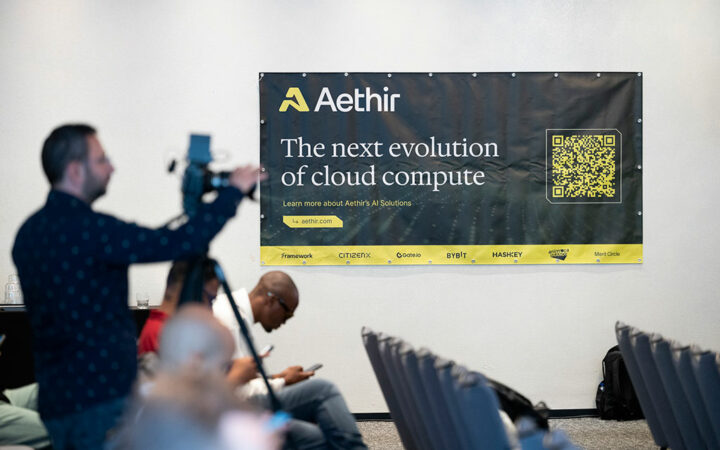
Please check out latest news, expert comments and industry insights from Coinspeaker's contributors.
The fusion of GPU power with cloud computing is a game-changer in the AI industry, offering unparalleled computational resources, efficiency, and accessibility.
 Edited by Julia Sakovich
Updated
5 mins read
Edited by Julia Sakovich
Updated
5 mins read

When you play a video game with stunning graphics, a GPU, or Graphics Processing Unit, is hard at work. Now, imagine using that same tool not just for games, but to power AI algorithms. That’s what’s happening in the tech space today.
Originally designed for video games, GPUs are now key players in AI development. And there’s a twist. These powerful GPUs are combined with cloud computing, which means you can use these supercharged tools through the internet, without needing one in your own computer.
Besides simplifying and speeding up complex AI tasks, the combination of GPU power and cloud flexibility provides significant advantages such as cost-effectiveness and scalability, making it ideal for businesses and individuals. Utilizing networks of cloud computing aggregators like nuco.cloud, GPU usage on the cloud is even cheaper and more seamless with advanced filtering options compared to traditional cloud providers such as Amazon Web Services (AWS).
With AI’s growing demands, GPU-as-a-service (GPUaaS) or cloud-based GPUs have remarkably soared in importance, with their market expected to hit $25.53 billion by 2030. This is because GPU cloud computing is revolutionizing AI by providing the immense computational resources needed, particularly in deep learning. It significantly shortens the time required to train complex AI models. For instance, training a neural network can take weeks using traditional CPUs, but this time can be reduced to days or even hours with GPUs.
Additionally, GPUs are highly efficient at handling large datasets, and when combined with the cloud, they allow for the processing and analysis of massive amounts of data, essential for accurate AI modeling.
This capability opens the door to more advanced AI applications like natural language processing, image and speech recognition, autonomous vehicles, and real-time analytics. Moreover, it plays a significant role in the Internet of Things (IoT) by enabling the real-time processing and analysis of the vast data generated by IoT devices, leading to smarter and more efficient systems.
Notably, cloud GPUs democratize AI development by making these powerful resources accessible to startups, researchers, and smaller organizations. This democratization fosters innovation and competition, as more players can participate in developing AI solutions.
While GPU cloud computing is transformative, it comes with challenges. The cost, while lower than maintaining in-house GPU setups, can still be significant, especially for prolonged and intensive tasks. Security and privacy concerns in cloud environments also need addressing, particularly for sensitive AI applications.
For instance, Amazon Web Services (AWS), with its vast cloud empire of 32% share in the worldwide cloud infrastructure market, surprisingly offers fewer GPU options than its competitors like Microsoft Azure and has a complex user interface, along with higher on-demand pricing. Then Azure requires technical expertise for its advanced features, not to mention a treasure map to understand its pricing. Google Cloud Platform (GCP) also provides fewer GPU options and has confusing pricing due to the need to attach GPUs to basic VMs.
Now, let’s talk about NVIDIA DGX Cloud, which is not suitable for firms with limited GPU needs and incurs costs from both the cloud provider and NVIDIA. IBM Cloud sees limited adoption compared to top providers. Oracle Cloud Infrastructure (OCI), on the other hand, suffers from a clunky user interface, obscure documentation, and a complicated start-up process.
Problems are not without solutions, nuco.cloud’s decentralized network of cloud computing aggregators is addressing the issues by offering a more secure and 70-90% cheaper computing power than the other alternatives mentioned above. This innovative platform provides a wide range of computing power solutions, including nuco.cloud GO, PRO, and notably SKYNET have achieved the status of the world’s first decentralized mesh hyperscaler, ensuring scalability and sustainability in cloud computing by harnessing untapped power from established data centers.
nuco.cloud PRO is especially ideal for GPU/CPU-intensive cases, for instance, in AI training and 3D rendering. It offers advanced filter options so that users can choose various factors like maximum latency, hardware preference, data center location, use of renewable energy, and required privacy/data protection certificates. By optimizing resource usage, this approach cuts down on unnecessary expenditure and energy consumption, striking a crucial balance in today’s dynamic computing environment.
In conclusion, the fusion of GPU power with cloud computing is a game-changer in the AI industry, offering unparalleled computational resources, efficiency, and accessibility. Cloud GPUs’ ability to handle numerous calculations simultaneously makes them perfect for AI tasks, which require a lot of data processing to learn and make decisions. By transforming AI’s capabilities in areas like deep learning and real-time analytics, they are democratizing AI development.
To solve the challenges such as cost and security concerns, platforms like nuco.cloud are emerging as pioneers, offering affordable and sustainable cloud computing solutions. With nuco.cloud PRO, tailored for GPU-intensive tasks, the future of AI looks more accessible and robust, promising a new era of innovation and efficiency in AI technologies.
Disclaimer: Coinspeaker is committed to providing unbiased and transparent reporting. This article aims to deliver accurate and timely information but should not be taken as financial or investment advice. Since market conditions can change rapidly, we encourage you to verify information on your own and consult with a professional before making any decisions based on this content.

Please check out latest news, expert comments and industry insights from Coinspeaker's contributors.





